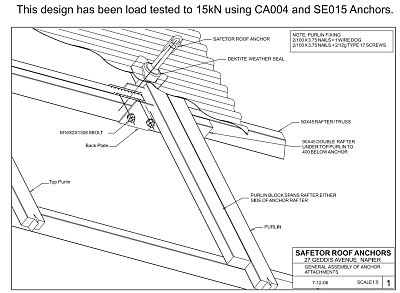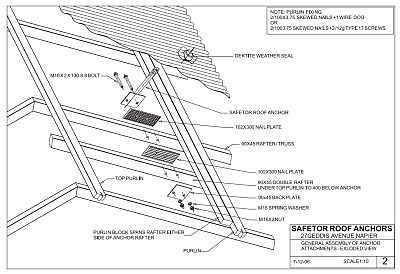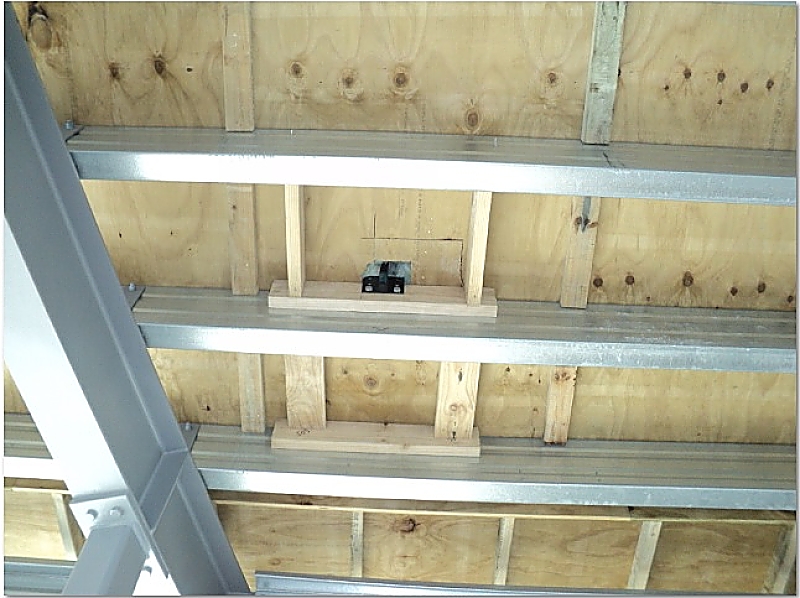Timber Trusses
Safetor Roof Anchors
This design has been tested by: Collins Corporation Ltd. & Materials Testing Laboratories to AS/NZS 1891.4.2009, and QSI to AS/NZS 5532:2013 and is only recommended with the use of Safetor Roof Anchors. We strongly recommend that two nail plates are used to protect joists, purlins, or trusses when bolting through timber members.This design has been tested to the AS/NZS 5532: 2013 Standard.


Test Specification:
Compliance test to 6.3.2 dynamic testing procedures of AS/NZS 5532:2013, Manufacturing requirements for single-point anchor device used for harness based work at height.
Static Testing:
When attaching anchors to steel purlins, make sure to protect the swages on the face of the purlin. Never drill holes larger than 7mm in the top flange of purlins as this can weaken the structural integrity of the purlin.Modern lightweight construction often has very little reserve strength, and drilling holes in some members to attach anchors may weaken them to an unacceptable level. The size and position of the holes are critical. Attaching an anchor through the top flange may reduce purlin strength by up to 36 percent, depending on the anchor type and the size of the purlin.
A structural engineer may be needed to assess the effect of adding anchors and determine whether other strengthening is needed.

All drawings and products are protected by ©2020 Collins Corporation LTD